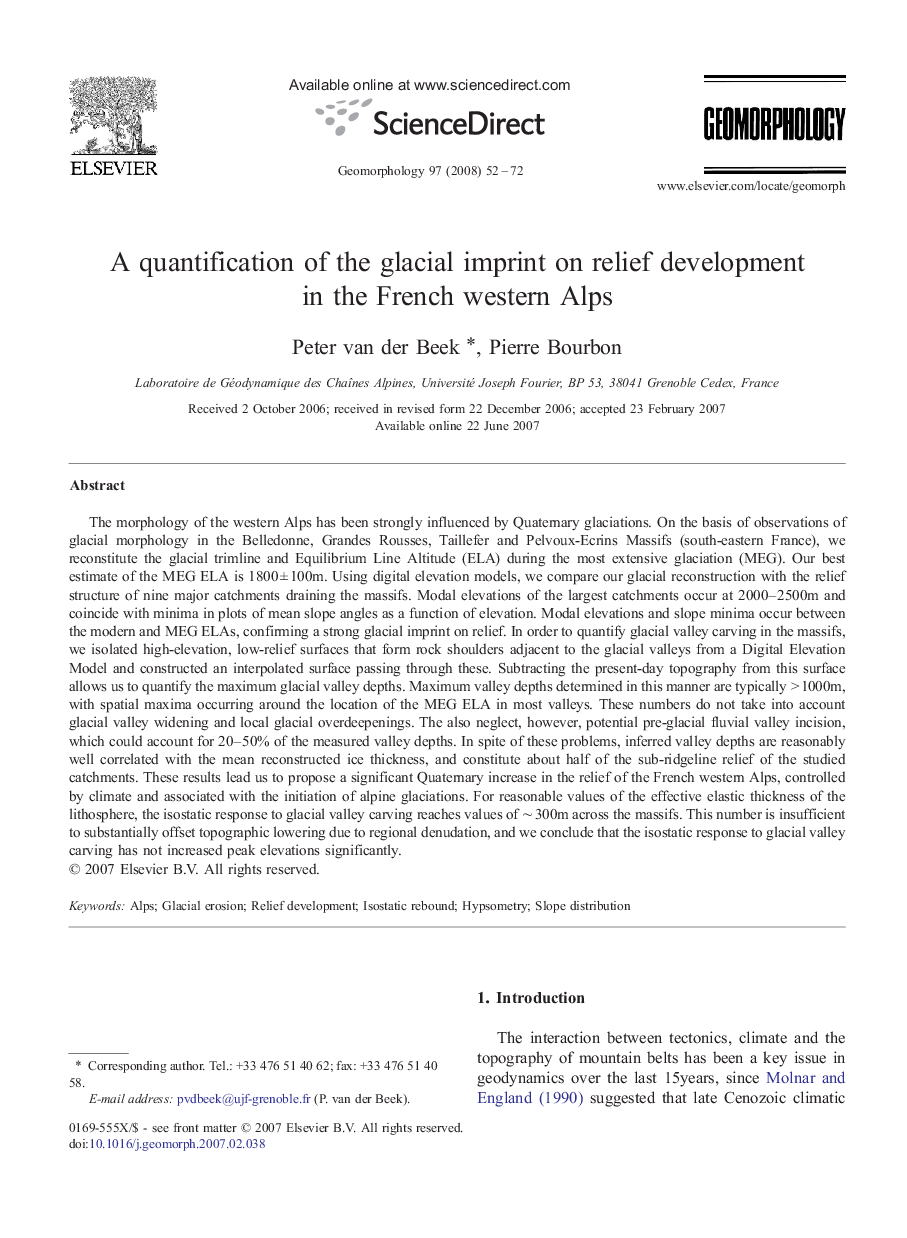| Article ID | Journal | Published Year | Pages | File Type |
|---|---|---|---|---|
| 4686742 | Geomorphology | 2008 | 21 Pages |
The morphology of the western Alps has been strongly influenced by Quaternary glaciations. On the basis of observations of glacial morphology in the Belledonne, Grandes Rousses, Taillefer and Pelvoux-Ecrins Massifs (south-eastern France), we reconstitute the glacial trimline and Equilibrium Line Altitude (ELA) during the most extensive glaciation (MEG). Our best estimate of the MEG ELA is 1800 ± 100m. Using digital elevation models, we compare our glacial reconstruction with the relief structure of nine major catchments draining the massifs. Modal elevations of the largest catchments occur at 2000–2500m and coincide with minima in plots of mean slope angles as a function of elevation. Modal elevations and slope minima occur between the modern and MEG ELAs, confirming a strong glacial imprint on relief. In order to quantify glacial valley carving in the massifs, we isolated high-elevation, low-relief surfaces that form rock shoulders adjacent to the glacial valleys from a Digital Elevation Model and constructed an interpolated surface passing through these. Subtracting the present-day topography from this surface allows us to quantify the maximum glacial valley depths. Maximum valley depths determined in this manner are typically > 1000m, with spatial maxima occurring around the location of the MEG ELA in most valleys. These numbers do not take into account glacial valley widening and local glacial overdeepenings. The also neglect, however, potential pre-glacial fluvial valley incision, which could account for 20–50% of the measured valley depths. In spite of these problems, inferred valley depths are reasonably well correlated with the mean reconstructed ice thickness, and constitute about half of the sub-ridgeline relief of the studied catchments. These results lead us to propose a significant Quaternary increase in the relief of the French western Alps, controlled by climate and associated with the initiation of alpine glaciations. For reasonable values of the effective elastic thickness of the lithosphere, the isostatic response to glacial valley carving reaches values of ∼ 300m across the massifs. This number is insufficient to substantially offset topographic lowering due to regional denudation, and we conclude that the isostatic response to glacial valley carving has not increased peak elevations significantly.
